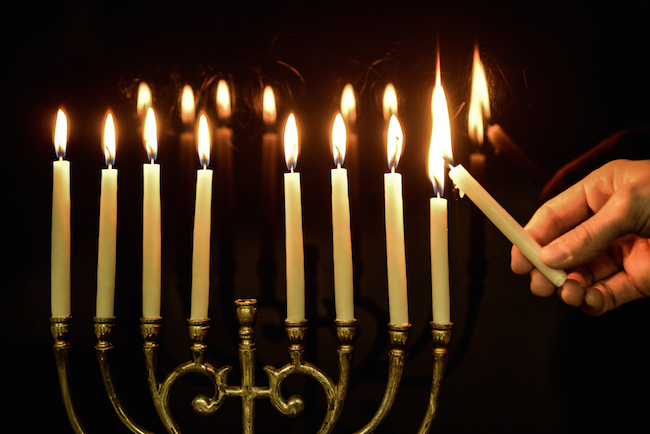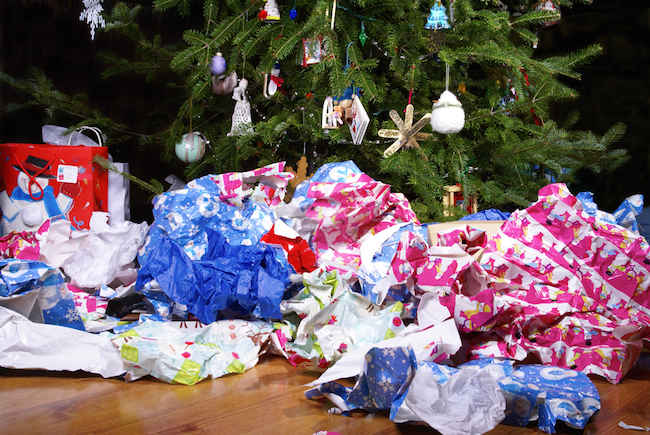Deck the Halls — Scientifically! 5 Smart Tips for Holiday Decorating

'Tis the season of tangled Christmas tree lights, burnt-out menorah bulbs and dried-up mistletoe. But as you deck the halls this year, there's one thing that can keep such decorating nightmares at bay: science. From how to keep a Christmas tree fresh and green to ensuring that festive lights don't interfere with your home's Wi-Fi signal, here are five scientific tips that will help you stress less this holiday season.
1. Use the right lights
You may have heard rumors that holiday lights can interfere with Wi-Fi signals, causing slow Internet connections and, subsequently, a very frustrating holiday. The reasoning behind this seasonal rumor is simple: Wireless networks operate using radio signals, and light bulbs also transmit radio signals, said Tom Coughlin, an electrical engineer and senior member at theInstitute of Electrical and Electronics Engineers (IEEE). This means, theoretically, the radio signals produced by a whole string of lights could interfere with your Wi-Fi signal.
However, the incandescent bulbs and light-emitting diodes (LEDs) used on most strandsof modern holiday lights emit low-frequency radio signals and are not likely to cause this problem, Coughlin told Live Science in an email. [7 Holiday Stress Busters]
Stuart Lipoff, an IEEE fellow, said he agrees with Coughlin. While holiday lights produced decades ago (especially the ones that blinked) may have caused radio interference, today's lights (even the flashing ones) are not likely to emit strong enough radio signals to mess up your wireless network, Lipoff said. So if you're worried that your old lights will ruin your holiday, just buy some new ones and you should be in the clear.
2. Trim (and water) the tree
Nothing will burst your holiday bubble quite as fast as a house full of prickly tree needles. But there's a scientific way to keep Christmas tree needles on the tree and off the floor. All you have to do is water the base of the tree regularly, said Rick Bates, associate professor of horticulture at Pennsylvania State University.
Get the world’s most fascinating discoveries delivered straight to your inbox.
"Maintaining a high moisture level in the tree is the single most important factor in reducing needle loss and keeping the tree fresh," Bates said on the Penn State College of Agricultural Sciences' website.
How often should you water your tree? Bates recommends replenishing the water-holding tree stand once a day during the first week that the tree is in your home (this is the time period when the fresh-cut tree absorbs the most water). The general rule of thumb is to provide the tree with 1 quart (that's 4 cups, or just less than 1 liter) of water per inch of trunk diameter.
You or your local Christmas tree dealer should also make a "fresh cut" in the base of the tree before bringing it inside for the holiday season. Re-cutting the stem of the tree just a little — about 0.25 inches or 0.64 centimeters — will help the tree take up more water and, consequentially, keep your tree looking fresh.
3. Do not knot
File this one under "knot theory." Are your Christmas tree lights constantly getting tangled up together in a giant, messy jumble? Believe it or not, there's a scientific explanation for why this happens, and there are even a few practical ways to prevent it from happening.
In 2007, physicists from the University of California, San Diego, performed a series of experimentsto figure out why some cords are more likely to tangle than others. The scientists found that cords between 1.5 feet and 5 feet (0.46 to 1.5 meters) in length were more likely to knot when they were disturbed or shaken inside of a container than were cords shorter than 1.5 feet. Cords that were longer than 5 feet were just as likely to knot as their shorter counterparts, which is bad news for anyone contending with 25-foot-long (7.6 m) strands of Christmas lights. [Tech the Holidays with 5 Geeky Holiday Decorations]
The researchers also found that flexible cords, like the ones that host your holiday lights, are more easily tangled than stiff cords, like electrical wires. The best way to keep your light strands from knotting is to limit their movement, the researchers said. This means wrapping your lights in coils until it's time to decorate. To keep your holiday merry, bright and tangle-free, try wrapping lights around rectangular pieces of cardboard.
4. Trim those wicks!
There's a scientific way to keep your Hanukkah candles burning for eight nights, and all you need to make it happen is a pair of scissors.
Before you light the menorah, trim the candlewicks between one-eighth of an inch to one-quarter of an inch (0.3 to 0.6 cm). Trimming the wicks will get the candle's "combustion process" off to a good start, said the National Candle Association, a trade association for candle makers in the United States.
When you light a candle, the wax at the base of the wick melts and is drawn up into the wick, where it adds fuel to the burning flame. A long wick causes too much fuel to be burned at once, making the candle's combustion process less efficient. This also causes undesirable side effects, such as a flaring or sooty flame (the soot is made of unburned carbon particles escaping from the flame before they combust). By keeping a candlewick short, you can limit these sooty side-effects and prolong the life of your candles.
5. Don't wrap anything
You won't need any scissors (or wrapping paper, tape or bows) for this next science-inspired tip. Research suggests that beautiful packaging is not the key to giving the perfect gift, which is good news for anyone who feels stressed by the idea of wrapping dozens of presents this holiday season.
Instead of spending time and money on wrapping paper, try putting some more effort into choosing the right gifts for the people you care about, said Ryan Howell, a psychologist at San Francisco State University and co-founder of beyondthepurchase.org.
In a recent interview with Live Science, Howell said that a meaningful gift is one that "shows that you really know the person well, and you really care about them." And that might mean finding a gift that you couldn't wrap even if you tried. [11 Outdoor Gifts for Exploring Our Amazing Planet]
Researchers from the Wharton School at the University of Pennsylvania have found that people who receive experiential gifts — things like concert tickets or a trip to an art museum — feel more connected to the gift giver than do people who receive material items as gifts. Just think: All that time you spend wrapping could be put toward planning the perfect day on the town with the ones you love.
Follow Elizabeth Palermo @techEpalermo. Follow Live Science @livescience, Facebook & Google+. Original article on Live Science.
 Live Science Plus
Live Science Plus








